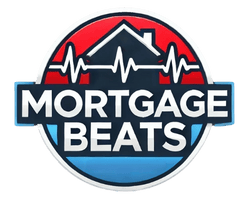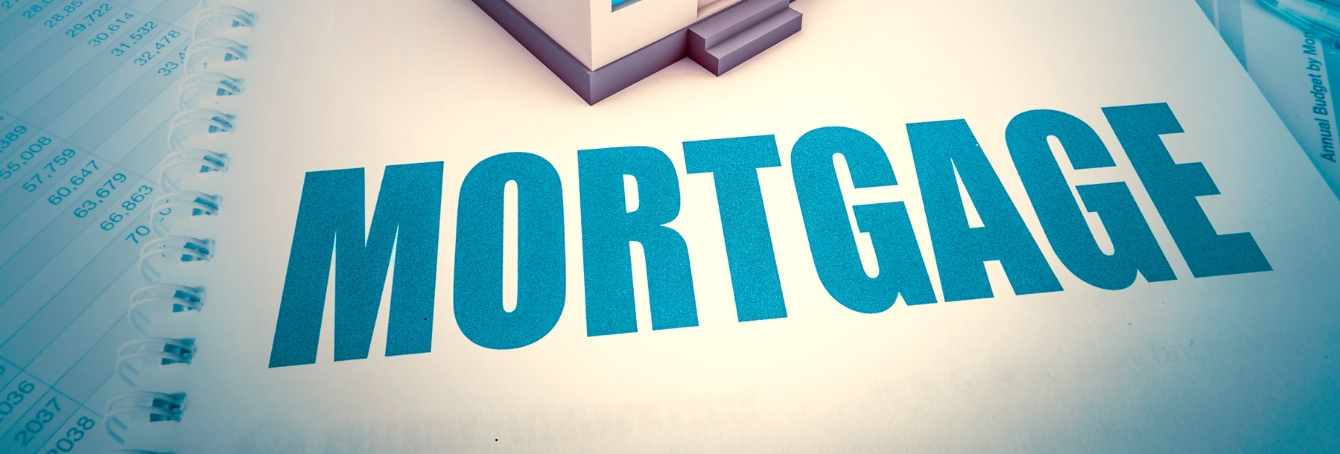Understanding the 15-Year Fixed Mortgage Structure
A 15-year fixed-rate mortgage provides homeowners with predictable payments and a compressed repayment timeline. Unlike adjustable-rate products or longer-term loans, this mortgage type locks in an unchanging interest rate while requiring complete payoff in half the time of standard 30-year financing. The condensed amortization schedule means each payment applies more toward principal reduction from the outset, fundamentally changing the loan’s financial dynamics compared to longer terms.
Lenders typically offer lower interest rates for 15-year mortgages compared to 30-year options, often by 0.5% to 0.75%, reflecting the reduced risk associated with shorter loan durations. These rate advantages combine with the accelerated timeline to create substantial interest savings over the life of the loan. However, the higher monthly payments required to satisfy the shorter term present budgeting challenges that not all homeowners can comfortably manage, making careful financial assessment essential before committing.
At NorCal Real Estate & Financial Service, we help clients analyze how 15-year mortgage payments would impact their complete financial picture. Our payment calculators compare various loan terms side-by-side, illustrating both short-term cash flow implications and long-term savings potential. This comprehensive view helps borrowers make informed choices aligned with their financial capabilities and homeownership goals.
Interest Savings: The Powerful Advantage
The most compelling argument for 15-year mortgages lies in their dramatic interest savings over the loan’s lifetime. On a $300,000 mortgage at current rates, choosing 15-year financing instead of 30-year could save $100,000 or more in total interest payments. These savings stem from two factors: the lower interest rate typically offered for shorter terms and the reduced time for interest to accumulate. The combination creates a powerful wealth-building tool for homeowners who can manage the higher payments.
Interest savings become particularly significant when viewed as opportunity cost. The money not paid to lenders could instead be invested or used for other financial goals. Early mortgage payoff also eliminates a major monthly obligation years sooner, freeing up cash flow during peak earning years that might otherwise go toward housing costs. For disciplined savers and investors, these advantages make 15-year mortgages an attractive path to faster financial freedom through debt elimination.
We illustrate these interest savings clearly for clients at NorCal Real Estate & Financial Service. Our detailed amortization comparisons show exactly how much goes toward principal versus interest with different loan terms, helping borrowers visualize the true cost differences. Many clients are surprised to see how much more of their money actually builds equity rather than disappearing into interest payments with shorter-term financing.
Higher Monthly Payments: The Trade-Off
The primary drawback of 15-year mortgages comes in their substantially higher monthly payments compared to longer terms. Using the same $300,000 example, payments might be 30-40% higher on a 15-year schedule versus a 30-year loan. This payment increase requires careful budgeting to ensure homeowners don’t become “house poor,” where disproportionate income goes toward housing at the expense of other financial priorities like retirement savings or emergency funds.
Payment affordability becomes especially crucial during financial setbacks. Job loss, medical emergencies, or other unexpected expenses can create strain when monthly housing costs consume a larger portion of take-home pay. While the faster equity building provides some safety net, liquidating that equity during crises often proves more difficult than simply having lower required payments from the outset. These realities make honest assessment of financial stability essential before choosing accelerated repayment.
Our advisors at NorCal Real Estate & Financial Service stress-test clients’ budgets against potential 15-year mortgage payments. We examine how higher housing costs would impact other financial goals and safety nets, ensuring borrowers don’t overextend themselves for theoretical long-term gains. This realistic approach prevents future financial stress while still identifying opportunities where shorter terms make sound strategic sense.
Equity Building Acceleration
15-year mortgages turbocharge equity accumulation from the very first payment. Where 30-year loans might take a decade before payments primarily reduce principal rather than interest, the condensed schedule of shorter terms means more money immediately builds ownership stake in the property. This rapid equity growth provides several advantages: greater net worth, improved borrowing power for future needs, and earlier freedom from mortgage obligations.
The accelerated equity also creates opportunities to leverage home value for other investments or financial needs sooner. Homeowners might access equity for business ventures, education funding, or real estate investments years earlier than with traditional financing. For those planning to downsize or relocate in the future, substantial equity built quickly could enable purchases without contingent sales or bridge financing. These strategic benefits extend beyond simple interest savings.
We help clients at NorCal Real Estate & Financial Service evaluate how rapid equity building could serve their broader financial plans. Our projections show how 15-year mortgage equity compares to alternative investment strategies, providing complete pictures of net worth progression under different scenarios. This holistic view helps determine whether aggressive equity building through mortgage terms makes better sense than slower payoff coupled with other investments.
Qualification Challenges for Some Borrowers
The higher monthly payments of 15-year mortgages create stricter debt-to-income ratio requirements that some borrowers can’t satisfy. Lenders evaluate whether applicants can comfortably manage the larger payments alongside other obligations, often making qualification more difficult than for 30-year loans with identical interest rates. This hurdle particularly affects first-time buyers or those in high-cost housing markets where even traditional mortgages stretch affordability limits.
Income stability becomes another crucial factor in 15-year mortgage approvals. Lenders prefer seeing consistent earnings histories that suggest reliable payment capability over the compressed term. Self-employed individuals or those with variable income might find qualifying more challenging unless they can demonstrate substantial reserves or exceptionally stable revenue streams. These realities sometimes force borrowers into longer terms despite their preference for faster payoff.
Our mortgage professionals at NorCal Real Estate & Financial Service help clients present their financial profiles most favorably to underwriters. We explore strategies like larger down payments or debt reduction that might make 15-year financing attainable when initial qualifications fall slightly short. For clients who can’t qualify, we suggest alternative approaches like making extra principal payments on 30-year loans to approximate the accelerated payoff benefits.
Impact on Cash Flow and Budgeting
Committing to a 15-year mortgage significantly alters household cash flow for over a decade. The higher payments require disciplined budgeting that accounts for reduced discretionary spending capacity. Families must carefully weigh this constraint against other financial priorities like childcare expenses, education savings, or retirement contributions that might compete for the same dollars. Failing to maintain this balance could undermine overall financial health despite the mortgage advantages.
Opportunity cost represents another cash flow consideration. Money directed toward larger mortgage payments can’t simultaneously fund other investments that might offer higher returns. In low-interest-rate environments, some homeowners might benefit more from investing surplus funds rather than accelerating mortgage payoff. This calculation depends on individual risk tolerance, investment knowledge, and alternative return opportunities available.
We guide clients at NorCal Real Estate & Financial Service through comprehensive cash flow analyses before recommending 15-year mortgages. Our models show how higher payments would impact other financial goals and emergency preparedness. Many clients find our balanced approach helps them choose mortgage terms that align with both their homeownership aspirations and complete financial picture.
Comparison to 30-Year Mortgage Alternatives
The conventional 30-year fixed-rate mortgage remains the most popular alternative to 15-year financing, offering lower monthly payments in exchange for longer terms and higher total interest costs. This traditional option provides greater payment flexibility, allowing homeowners to make extra principal payments when possible while maintaining lower required payments during tight financial periods. The hybrid approach appeals to those wanting balance between aggressive payoff and cash flow management.
Financial flexibility represents the 30-year mortgage’s greatest advantage. Homeowners can always choose to pay a 30-year loan like a 15-year by making additional principal payments, but they aren’t locked into that higher obligation. This optionality proves valuable during economic downturns, career changes, or family transitions when reducing housing costs temporarily becomes necessary. The safety net of lower required payments provides security that rigid 15-year terms lack.
At NorCal Real Estate & Financial Service, we help clients weigh these trade-offs through detailed scenario comparisons. Our analyses show how making extra payments on 30-year mortgages could approximate 15-year payoff timelines while maintaining payment flexibility. These alternatives often provide attractive middle-ground solutions for borrowers torn between the two approaches.
Best Candidates for 15-Year Financing
Ideal candidates for 15-year mortgages typically have stable incomes well exceeding minimum payment requirements, substantial emergency savings, and disciplined financial habits. Homeowners in their peak earning years with established retirement accounts often benefit most from accelerated payoff strategies, as they can comfortably manage higher payments while still meeting other financial obligations. These borrowers value debt freedom and have sufficient assets outside home equity.
Another strong candidate profile includes homeowners with significant down payments that reduce borrowed amounts to manageable levels. A 50% down payment on a $400,000 home, for example, makes the $200,000 mortgage’s 15-year payments more affordable than borrowing the full amount. Similarly, those relocating from high-cost to lower-cost housing markets might leverage prior home equity to facilitate shorter terms on their new properties without payment strain.
We help clients at NorCal Real Estate & Financial Service assess whether they fit these optimal borrower profiles. Our comprehensive financial reviews examine income stability, savings patterns, and future obligations to determine if 15-year mortgage payments would complement or conflict with overall financial health. This personalized approach ensures mortgage terms align with each borrower’s unique situation rather than following general rules of thumb.
Refinancing Considerations
Homeowners with existing 30-year mortgages sometimes consider refinancing into 15-year terms when their financial situations improve. This strategy makes most sense when interest rates have dropped significantly since original financing and the borrowers’ incomes have increased enough to comfortably absorb higher payments. The combined benefit of lower rates and shorter terms can create substantial savings, though closing costs require careful evaluation against potential benefits.
Refinancing into shorter terms becomes particularly appealing as homeowners approach traditional retirement ages. Eliminating mortgage debt before leaving the workforce provides financial security and reduces fixed expenses during lower-income retirement years. Mid-career professionals expecting future income growth might also strategically refinance later when they can better manage 15-year payments while still capturing meaningful interest savings.
Our refinance specialists at NorCal Real Estate & Financial Service analyze these timing considerations carefully. We calculate break-even points and long-term savings to determine if shortening loan terms through refinancing makes mathematical sense for each client’s situation. Many homeowners find targeted refinancing later in their mortgage lives provides better value than committing to 15-year terms from the outset.
Making an Informed Decision
Choosing between 15-year and longer mortgage terms requires balancing mathematical advantages against lifestyle priorities and financial flexibility. The substantial interest savings and rapid equity building of shorter terms appeal logically, but only if the higher payments don’t create stress or prevent other important financial goals. Emotional factors like debt aversion or desired retirement timelines also legitimately influence this deeply personal decision.
Financial cushion proves essential when considering 15-year mortgages. Lenders might approve payments consuming 35% of gross income, but smart borrowers keep housing costs below 25% of take-home pay to maintain healthy financial margins. Those with substantial emergency funds, diversified investments, and stable careers can better weather the tighter budgets that come with accelerated payoff schedules. Without these safeguards, the risks often outweigh the rewards.
At NorCal Real Estate & Financial Service, we facilitate these decisions with data-driven analysis and personalized guidance. Our mortgage professionals help clients evaluate both quantitative factors and qualitative lifestyle considerations to choose loan terms that truly fit their financial personalities and goals. This balanced approach has helped countless homeowners make confident mortgage decisions they don’t later regret.
Conclusion
The 15-year fixed-rate mortgage offers compelling benefits for the right borrowers but demands careful financial assessment before committing. Dramatic interest savings and rapid equity building come at the cost of higher monthly payments that reduce budgetary flexibility for over a decade. Ideal candidates possess stable excess income, robust emergency funds, and disciplined money management habits that make the trade-offs worthwhile.
The mortgage experts at NorCal Real Estate & Financial Service specialize in helping clients navigate this important decision. Our comprehensive analysis compares short-term payment impacts against long-term wealth building across all loan options. We’ve helped numerous homeowners determine whether 15-year financing accelerates their financial goals or unnecessarily constrains their lifestyles.
For those considering mortgage options, we invite you to contact our team for personalized consultation. Whether a 15-year term fits your situation or alternative strategies make better sense, our expertise will guide you to the optimal financing choice. Let us show you how our client-focused approach transforms complex mortgage decisions into clear paths toward your homeownership and financial objectives.
Ready To Get The Best Financial Advise, Email us at: Chris@mortgagebeats.com



